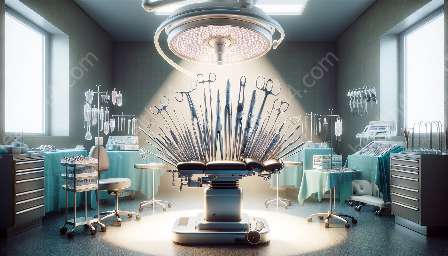Ultrasound machines are indispensable tools in modern medical facilities, playing a crucial role in the diagnosis and treatment of various conditions. The innovative technology behind ultrasound machines has made them compatible with surgical instruments and other medical devices & equipment, enhancing their effectiveness and applicability.
The Evolution of Ultrasound Machines
Ultrasound machines have undergone significant advancements in recent years, enabling healthcare professionals to obtain detailed images and real-time information for various medical procedures. The integration of cutting-edge technologies, such as 3D and 4D imaging, has revolutionized the capabilities of ultrasound machines, making them valuable assets in both surgical and diagnostic settings.
Compatibility with Surgical Instruments
The compatibility of ultrasound machines with surgical instruments is a key factor in enhancing surgical precision and efficiency. Surgeons rely on ultrasound guidance to navigate intricate anatomical structures during minimally invasive procedures, ensuring accurate localization and precise instrument placement. This synergy between ultrasound machines and surgical instruments results in improved patient outcomes and reduced surgical complications.
Integration with Medical Devices & Equipment
Ultrasound machines have seamlessly integrated with various medical devices and equipment, offering versatile solutions for diagnostic imaging, interventional procedures, and therapeutic interventions. From ultrasound-guided biopsies to ultrasound-assisted catheter placements, the collaborative use of ultrasound machines with other medical tools has expanded the scope of medical interventions, providing healthcare professionals with the necessary guidance and visualization to deliver optimal patient care.
Applications in Surgical and Diagnostic Settings
The applications of ultrasound machines span across diverse medical specialties, including cardiology, obstetrics, gynecology, urology, and more. In surgical settings, ultrasound machines facilitate the precise localization of tumors, organs, and blood vessels, enabling surgeons to perform intricate procedures with greater accuracy and minimal invasiveness. In diagnostic settings, ultrasound machines serve as invaluable diagnostic tools, allowing healthcare providers to assess internal structures, detect abnormalities, and monitor the progression of various medical conditions.
Advantages of Ultrasound Machines
Ultrasound machines offer numerous advantages, including non-invasiveness, real-time imaging capabilities, portability, and cost-effectiveness. The non-ionizing nature of ultrasound imaging makes it a safer alternative to traditional imaging modalities, particularly in sensitive patient populations. Additionally, the portability of ultrasound machines empowers healthcare providers to deliver point-of-care diagnostics in various clinical settings, optimizing patient care and workflow efficiency.
Future Innovations and Emerging Technologies
The future of ultrasound machines is poised for continuous innovation, with ongoing research and development focusing on enhancing image quality, expanding clinical applications, and integrating artificial intelligence (AI) algorithms for advanced image analysis. These advancements will further solidify the role of ultrasound machines as indispensable assets in modern healthcare, driving improvements in patient care, diagnostic accuracy, and therapeutic interventions.
Conclusion
Ultrasound machines have evolved into essential components in the realm of surgical instruments and medical devices & equipment. Their compatibility, versatility, and technological advancements have empowered healthcare professionals to deliver superior care and outcomes across a wide spectrum of medical specialties. Embracing the potential of ultrasound machines and their collaborative capabilities with surgical instruments and medical devices & equipment is paramount to advancing patient care and driving innovation in modern healthcare.


